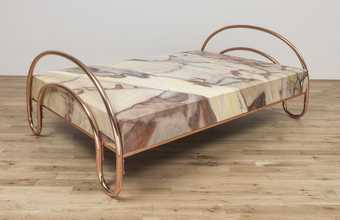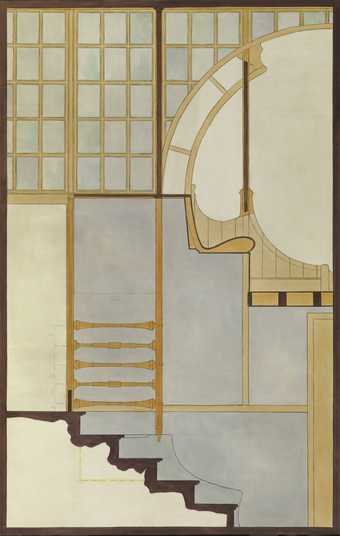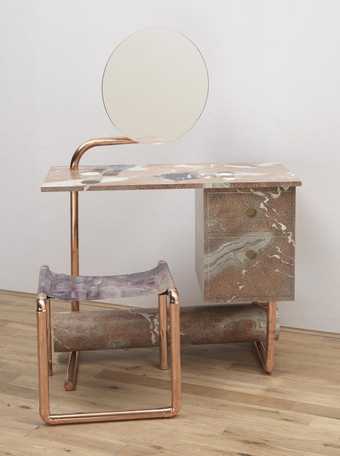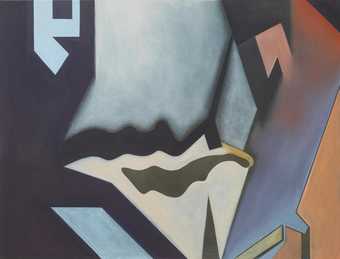I think it’s very important for painting that it has to question all the givens to do with classical painting, especially as a woman painter. It’s very important that we make painting what we want it to be, and we don’t just play by the rules.
I grew up in Glasgow, and me and all my friends, we all lived in beautiful Georgian town houses with bay windows and high ceilings which had all been turned into really decrepit bedsits by the time we were there.
To try and depict an interior which was once grand but has been turned into this kind of modern living dwelling was my intention. You can see by the shared telephone or the makeshift electricity, and the fact that there used to be paintings on the wall and they’ve gone, and there’s water damage. It’s trying to bring a sense of reality or of narrative to what would have once been a very perfect bourgeois interior.
The work here came from an exhibition called Slender Means. It’s inspired by a novel by the Scottish writer Muriel Spark, called The Girls of Slender Means. The book is set in London in the post-war era. There is a house which is bequeathed by a trust to house young women of slender means. The house in which they live is a beautiful Kensington town house which has been chopped up and turned into lots of little rooms. And it’s something about the story of the 20th century. We have our glorious Victorian past. We used to have a moneyed class, but this just disappeared in the post-war era, and all those beautiful houses are now turned into tiny apartments.
I studied in a special school in Brussels called Van Der Kelen, which teaches 19th century decorative painting. They way that they are painted doesn’t relate to, for instance, scenery painting or backdrop; they were done specifically to the rules of decorative painting for a house, so the detail is very, very fine. Now, these were used by a film-maker called Lucile Desamory as backdrops for a film that she made last year, in 2011, and to make paintings knowing that they would be used as a décor is just a new, expansive way to think about painting.





